Upward views, but not only upward
Wednesday, 7 March 2018
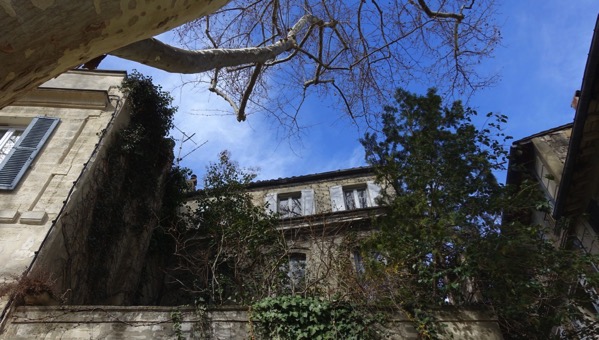
We set off for the southeast quadrant of the city—inside the walls, of course. Somewhere central to the old city, I found this gnarly garden peeking over the second-story wall. Wonder how mossy it is inside.

A bit farther, we found this looming belltower, with the “teeth” detail on the spire. If I were a better historic preservationist, I would know the real name for those zipper-teeth features.
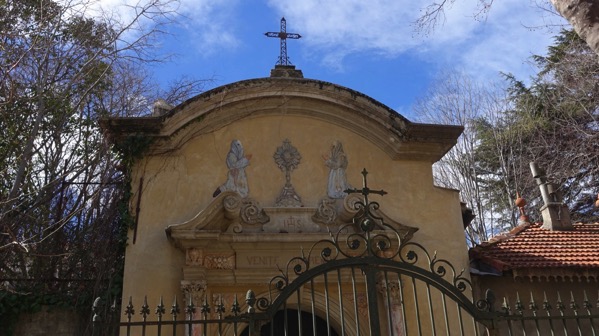
We finally reached the street of the dyers, which has a creek running alongside it. This chapel has its own footbridge for worshippers to cross into it.

They have left a few waterwheels intact in the creek, and they slowly turn turn turn. In the walls, we could see the sockets for the axles of missing ones. Not sure what the waterwheel power was used for; the adjacent buildings are mostly residences, with a few converted(?) into offices. Nothing looks like the workplace of dyers.

We lunched at the restaurant under the curved awning around the curve in the rear-ground.
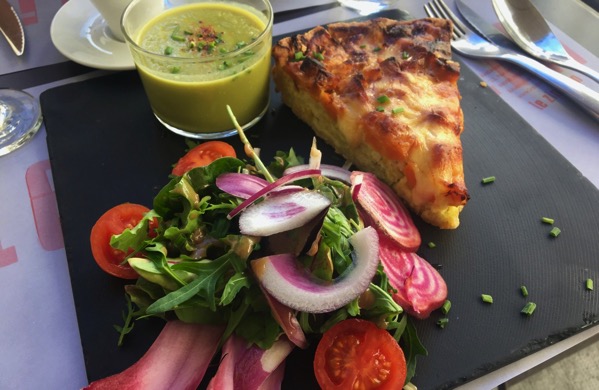
I had the veg lunch: hot leek puree soup, a quiche of onion with sweet potato chunks on top, and a salad with assorted veg, including raw bicolor beets.

From there, we went to the south city wall, crossed outside briefly, then made our way north, toward the river, staying east of the ex-pope-complex.

We crossed outside the wall, and managed to dash across several lanes of traffic (when the traffic wasn’t there), to walk along the river. I wondered how close the water was to the city walls in medieval times.
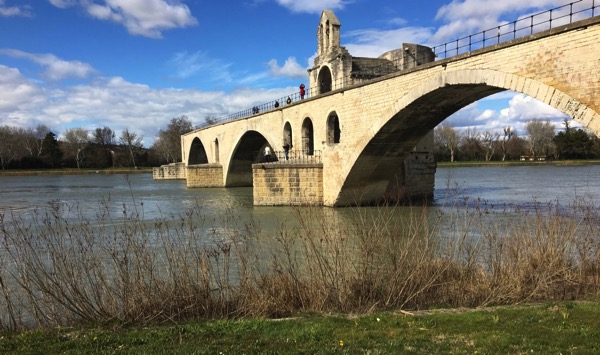
We wandered west along the water, saw a free pedestrian ferry that crosses to the island, back and forth. It doesn’t look like an island because it’s a big one. We watched the ferry get caught in the swift current, and maneuver against the river’s force.
One of the tourist spots of Avignon is this bridge stub, originally built between 1177 and 1185. It was the downstream-most bridge of the river, and I imagine toll collection was a fierce business. The bridge was destroyed and rebuilt in the 1200s, and these arches are often dated to the 1340s. The bridge was abandoned in the mid-1600s. The bridge went across the island and a second branch of the Rhône, so it was much longer than it looks here. [Note dandelions flourishing in the lawn.]
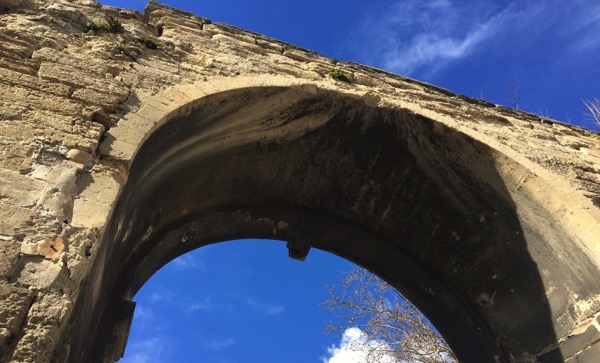
We crossed back through the wall, re-entering the old city. As near as I can tell, nowhere along the wall can tourists access the top. The walls seem narrow, but high. Now, anyway.

We took a break, then went out for a hot meal. This is my plate, sea bream with assorted veg, including yellow potatoes, purple potatoes, roasted tomatoes orange and red, roasted sweet orange pepper, fresh pea shoots and alfalfa sprouts, with a bit of tasty gravy and fresh bread.
I’ve been craving veg, and I got them today!